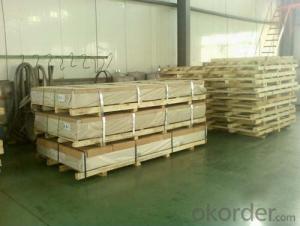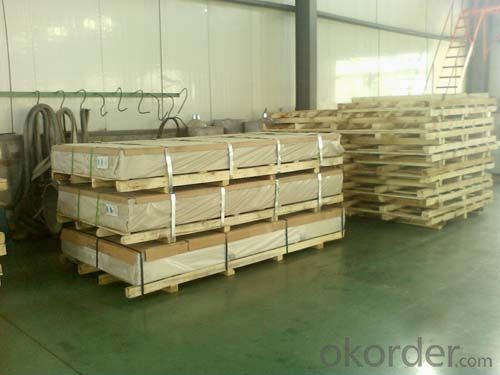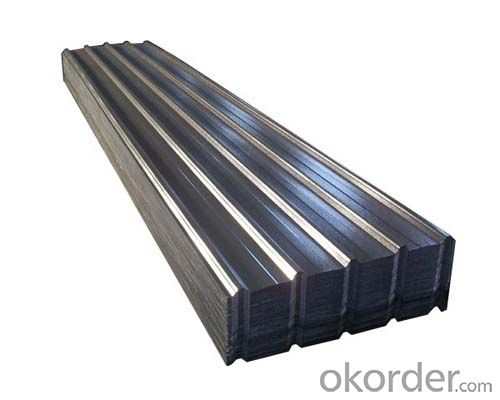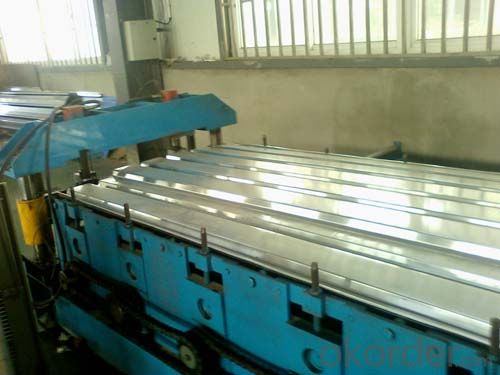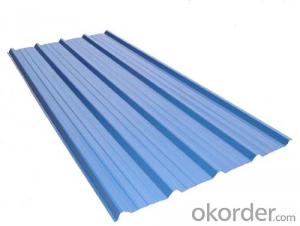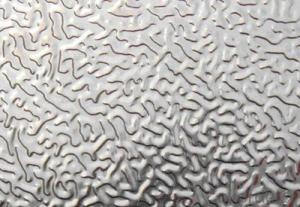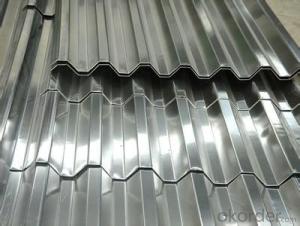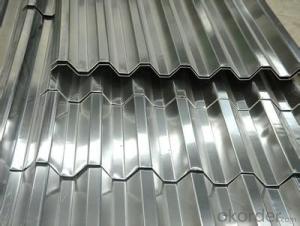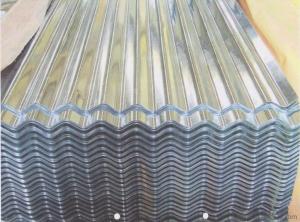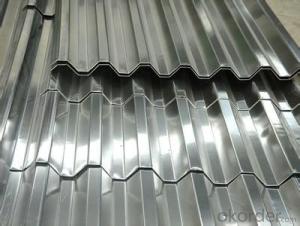Industrial Aluminum Sheets for Corrugated Aluminum Roofing Sheets
- Loading Port:
- China main port
- Payment Terms:
- TT or LC
- Min Order Qty:
- 5 m.t.
- Supply Capability:
- 5000 m.t./month
OKorder Service Pledge
OKorder Financial Service
You Might Also Like
Specification
1. Specifications of Aluminum Sheets For Corrugated Aluminum Roofing Sheets
Alloy: 1100, 1050, 1060, 3003
Temper: H18
Thickness: 0.2-1.5mm
Width Before Pressed: 1000mm
Wave shape: Trapezia/sine wave
2. Application of Aluminum Sheets For Corrugated Aluminum Roofing Sheets
It can be widely used in the decoration for construction field, electronics and household electrical appliance field, transportation field and packing field, ect.
3. Feature of Aluminum Sheets For Corrugated Aluminum Roofing Sheets
*Such coil is specially designed to replace aluminum ingot, due to the high export tax of aluminum ingot, the coil has better price than ingot.
*This type of coil can fit customer's remelting furnace just like ingot, no need to make any change to the production line that was previously used for ingot. The standard coil size and weight is very suitable for the feed gate of furnace.
*This type of coil causes less material wastage than ingot when remelted.
*Our coil is made directly from ore, no need to go though the ingot making process, quality is much better than other suppliers who use ingot scrap to make coil.
Be free from Oil Stain, Dent, Inclusion, Scratches, Stain, Oxide Dicoloration, Breaks, Corrosion, Roll Marks, Dirt Streaks and other defect which will interfere with use
4. Certificate:
SGS and ROHS(if client request, paid by client), MTC(plant provided), Certificate of Origin(FORM A, FORM E, CO), Bureau Veritas and SGS (if client request, paid by client), CIQS certificate
5. Image of Aluminum Sheets For Corrugated Aluminum Roofing Sheets
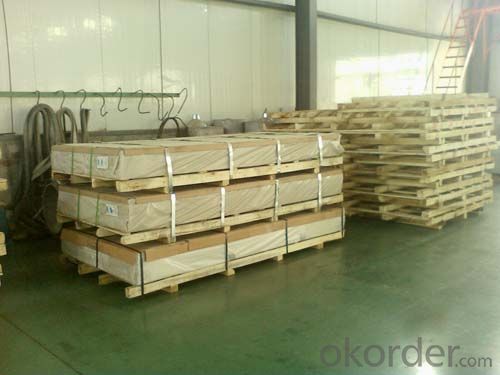
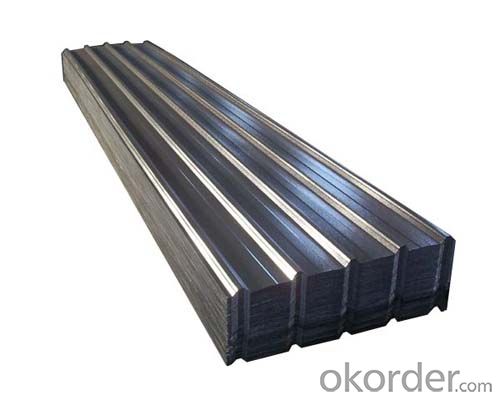
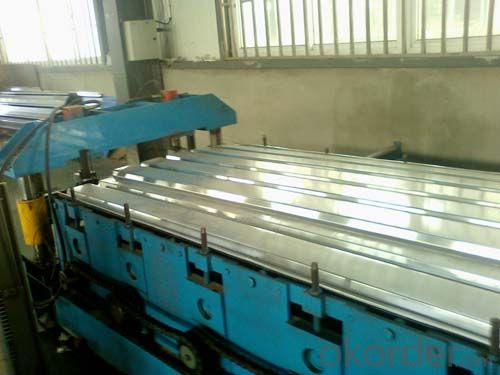
6. FAQ
1) What is the delivery time?
Dpends on actual order, around 20 days
2) What is the QC system:
We have QC staff of 20 persons and advanced equipment, each production is with MTC traced from Aluminum ingot lot.
3) What market do you mainly sell to?
Australia, America, Asia, Middle East, Western Europe, Africa etc
- Q: Can someone please explained what aluminum reacts slowly with dilute acided?Thank you!
- Firstly, dilute acids are weaker than concentrated acids. This slows the rate of reaction. Secondly, Aluminium is less reactive than the Group 1 and Group 2 metals, which slows the rate of reaction. It is less reactive because it has to form 3+ ions which is more draining than forming 1+ or 2+ ions. Thirdly, Aluminium oxidises well in air but, unlike rust, this oxide sticks to the pure aluminium, forming a protective layer.
- Q: What is the hardness rating of 101 aluminum sheets?
- The hardness rating of 101 aluminum sheets can vary depending on several factors, such as the alloy composition, heat treatment, and manufacturing processes. However, in general, aluminum alloys are known for their relatively low hardness compared to other metals. The Rockwell hardness scale is commonly used to measure the hardness of metals, but it is not typically applied to aluminum. Instead, the Brinell or Vickers hardness tests are more commonly used for aluminum alloys. Without specific information about the alloy composition and any specific heat treatment applied to the 101 aluminum sheets, it is difficult to provide an exact hardness rating. Therefore, it is recommended to consult the manufacturer or supplier of the specific 101 aluminum sheets for accurate hardness information.
- Q: Can aluminum sheets be used for architectural cladding?
- Yes, aluminum sheets can be used for architectural cladding. Aluminum is a popular choice for cladding due to its durability, lightweight nature, and resistance to corrosion. It is commonly used in both residential and commercial buildings for its aesthetic appeal and versatility in various architectural designs.
- Q: Explain how the use of aluminum sheets can impact the energy efficiency of a building.
- <p>Aluminum sheets can significantly affect a building's energy efficiency due to their excellent thermal conductivity and reflective properties. They can be used in building construction to form a barrier against heat transfer, reducing the need for heating and cooling. Additionally, aluminum's reflective surface can help in reflecting sunlight, thereby reducing heat gain in the building. However, if not properly insulated, aluminum's high conductivity can lead to heat loss, reducing energy efficiency. Therefore, the use of aluminum sheets in buildings often requires a balance between their heat-reflective and heat-conductive properties to optimize energy efficiency.</p>
- Q: how to produce aluminium sheet circle?
- As for the process, you can use punch.. as for professional machines, for example, stationary press in open type, mechanical press/ single-point press. The material you say is neither big nor small, blanking…(cutting them into sheet circle you want) you can add an uncoiling if it’s coil stock: open-type inclinable press, four-point press,ect. It’s not certainly accurate) punch, oil press, double , four-column hydraulic (oil) press,etc. it needs about 315T,(estimated value, closed type single, blank material cutting (cutting into square ) 2, it contains sheet metal forming technology, crank press: 1: straight side two : 1, but the components you said is simple, only two steps.
- Q: I need to find 3 elements for my science hw tonight. I was wondering if aluminum foil is a pure element. And also I was wondering if anyone had any ideas of what is a pure element (not a compound or an alloy). Thanks!!!!
- www.okorder
- Q: Can aluminum sheets be an alternative to stainless steel?
- Yes, aluminum sheets can be considered as an alternative to stainless steel in certain applications. Aluminum is a lightweight metal that offers good strength-to-weight ratio, making it suitable for various industries such as aerospace, automotive, and construction. It is also highly corrosion resistant due to the formation of a protective oxide layer on its surface, similar to stainless steel. Aluminum sheets can be cost-effective compared to stainless steel, especially in large-scale projects where the reduced weight can result in lower transportation and installation costs. Additionally, aluminum is a good conductor of heat and electricity, which makes it a suitable choice for applications that require thermal or electrical conductivity. However, stainless steel still holds certain advantages over aluminum. Stainless steel is generally stronger and more durable than aluminum, making it suitable for heavy-duty applications or environments where high mechanical strength is required. Stainless steel also has better resistance to extreme temperatures and fire, which can be crucial in certain applications. In conclusion, while aluminum sheets can be an alternative to stainless steel in many cases, the choice ultimately depends on the specific requirements of the application, including factors such as strength, durability, corrosion resistance, and cost.
- Q: There seems to be a load of buzz out there regarding the use of aluminum pots and pans. They apparently may cause Alzheimer’s or bone degeneration in women. I have some cast iron pans that I use when ever possible but they are not always practical. I’d like some of you kitchen pros to give me some sound advice regard the use of aluminum in the home kitchen. I know they are used in food service organizations.... I look forward to some informative replys.Thanks in advance.
- Your right it's like if you drink alot of soda or beer out of aluminum yes it's a fact that evetually it can cause health issues,i know i apologize for my spelling and it sucks.
- Q: is steel better for making bicycle frames.....how does it differ from the aluminum framed bikes?
- Steel is better for road bikes and touring bikes, while aluminum is better for race bikes because its lighter. Steel will rust, so if you have a bike where it rains a lot or you ride in the winter, you need to apply a coat of Frame Saver every year to keep the inside of the frame rust-free.
- Q: What are the safety precautions when working with aluminum sheet?
- When working with aluminum sheet, it is important to follow certain safety precautions to ensure your well-being and minimize the risk of accidents or injuries. Here are some safety measures that should be taken into consideration: 1. Personal Protective Equipment (PPE): Wear appropriate PPE such as safety glasses, gloves, and a long-sleeved shirt to protect yourself from potential hazards. Aluminum shavings can be sharp and can cause injuries if they come into contact with your skin. 2. Ventilation: Work in a well-ventilated area or use local exhaust ventilation systems to prevent the accumulation of fumes and dust. Aluminum dust or fumes can be harmful if inhaled in large quantities. 3. Fire safety: Aluminum is highly flammable, so it is crucial to keep flammable materials away from the work area. Have a fire extinguisher readily available and know how to use it in case of any fire emergencies. 4. Tool safety: Ensure that all tools and equipment used for cutting, bending, or shaping aluminum are in good working condition. Dull or damaged tools can increase the risk of accidents. Follow proper tool handling techniques and avoid using excessive force to prevent injuries. 5. Proper handling: When moving or lifting aluminum sheets, use proper lifting techniques and seek assistance if necessary. Aluminum sheets can be heavy and can cause strains or muscle injuries if not handled properly. 6. Electrical safety: If electrical tools or equipment are used, make sure they are properly grounded and in good working condition. Avoid using damaged or frayed cords and keep them away from any water sources. 7. Storage: Store aluminum sheets in a designated area, away from any heat sources or flammable materials. Properly stack and secure the sheets to prevent them from falling or causing any hazards. 8. First Aid: Have a first aid kit available in case of any minor injuries. Familiarize yourself with the appropriate first aid procedures for cuts, burns, or any other potential injuries that may occur while working with aluminum sheets. By following these safety precautions, you can ensure a safe working environment and minimize the risks associated with handling aluminum sheets. Remember to always prioritize your safety and the safety of those around you.
Send your message to us
Industrial Aluminum Sheets for Corrugated Aluminum Roofing Sheets
- Loading Port:
- China main port
- Payment Terms:
- TT or LC
- Min Order Qty:
- 5 m.t.
- Supply Capability:
- 5000 m.t./month
OKorder Service Pledge
OKorder Financial Service
Similar products
Hot products
Hot Searches
Related keywords
